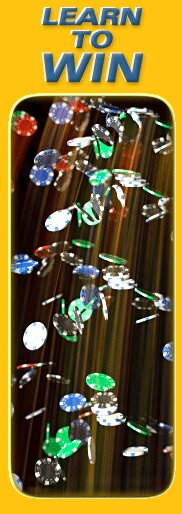Paigow Game without cards
This Paigow Game lesson describes the version without cards and brings the number of lessons about paigow to a total of 5 found at the GT Learn Poker 2 program.
We begin with the history that includes a Chinese Emperor, boredom and some fashioned domino-tiles used to create a very entertaining and popular game.
Ancient China has given us many gems and this game happens to be one of them.
It is an indoor game played with wooden tiles and dominoes that the Chinese developed.
This paigow game is played all over the world today, especially the card game version in Vegas casinos, as it is simple to understand and learn.
The word Pai is Cantonese and in the days of old was used to stand for both cards as well as dominoes as the Chinese used dominoes or leaves for the present day card games. Dominoes are after all, a pair of dice.
These days, Paigow is an ambiguous term used both for the card game as well as the dominoes game.
The paigow game is similar to poker but very different from the card game that was developed only to scoff at gambling laws.
It first came into public notice in March 1993 due to an episode of the same name in the popular TV Series Kung Fu: The Legend Continues, where the main characters Caine and Peter probe the death of a number of players in a high stakes Paigow tourney.
Paigow Game: Rules
Understanding the rules is fairly easy. Paigow simply means to make nine, implying that if you intend to win, you have to get a tile score as close to 9 as possible.
Points are counted up to nine after which the modulus 10 rule applies with subsequent numbers starting again from 1. The woodpile is four tiles long in height and eight tiles wide in length.
The dice are thrown thrice, the numbers added up and counted counter clockwise from the bank to determine which player would be the first one to draw a hand. Players get a four tiles stack.
At the start, the banking authority resides with the house but as ones play progresses, the bank is passed around to other players in counter clockwise direction. A player can refuse to take on the bank.
The dealing is elaborate and is generally referred to as Paigow Cuts. The game can have up to eight players, one being the banker. Later, any number of onlookers can chip in.
Each player has two hands in the game. This is done by dividing the four tiles into sets of two. The usual chips are used as stakes--at homes as the fake currency and at banks as the real currency that can be cashed in later.
Paigow game is won when a player’s high hand beats the bank’s high hand, and the player’s low hand beats the bank’s low hand.
If only one of the hands of a player outranks the bank, the game is drawn and the player gets his/her money back. If both the bank’s hands outrank the player’s hand then he/she loses the game.
Once all the players have examined their tiles and placed their stakes, other people can participate by chipping in their stakes alongside the players. If the banker so wishes, an upper limit might be set for the stakes.
The fun begins now with the players exposing their high hands in counter clockwise direction from the bank. The bank then reveals its high hand.
Next, the players show their low hands and so does the bank.
Either the bank or a player has to outrank the other on both the hands to win a round.
Another scenario involves a draw with two players winning a hand each. The bank pays these players plus the onlookers who had bet with these players, on the lines of their stakes. The game continues additional rounds with the player to the banker’s right taking over the bank in subsequent rounds.
Paigow Game Strategies:
Tips to win this skill game are few and simple. Even one point is enough to beat the bank’s hand, so pairing up the good tiles for a strong high hand and leaving the weak tiles for a low hand will only result in a draw. Balance out the tiles properly and win the game.
Look out for the unmatched pairs that might give you a winner. If you get a [6-6] or [1-1], play them with tiles totaling 7, 8 or 9.
Just make sure you make the required 9 and you will be good to play!
After paigow game, return to Learn Poker 2 Program
Gambling Teachers Home
GT is attentive about getting the word out about our free programs, lessons and add-ons offered, however, we ask your assistance and consideration in promoting us.
Click link below that reads, "Enjoy this page? Please pay it forward. Here's how..." to add a link to your site, blog or personal page.
Tips, Terms & Wins
Billiards 9-Ball is played with 9 object balls numbered from one to nine and of course the cue ball. The first contact made should always be lowest numbered ball on the table and it won’t matter which ball is potted.
After the first player misses, the second player would take over from the position where the first player left off. The game is won by pocketing the 9-Ball.





